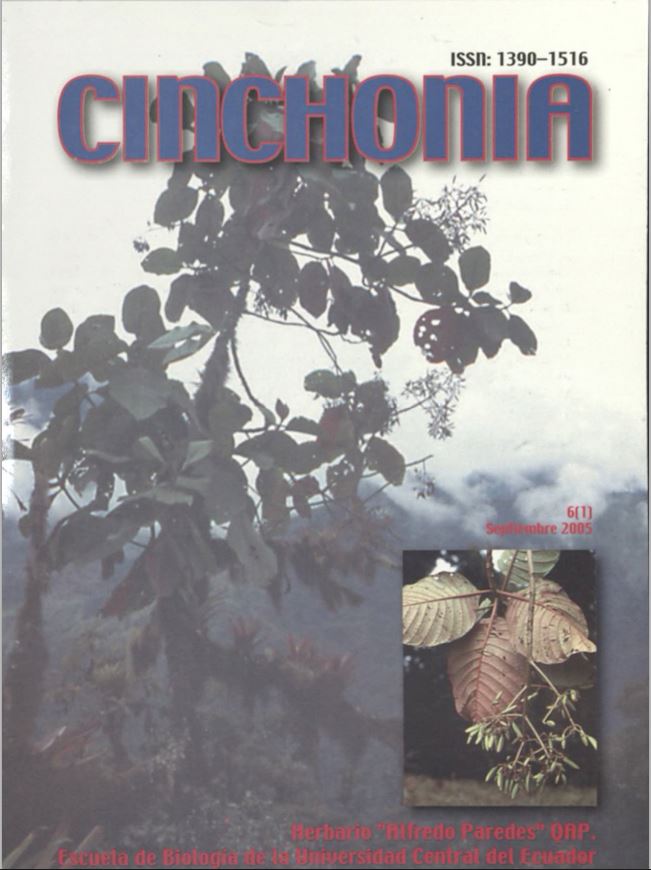ETNOBOTÁNICA QUICHUA LIMONCOCHA, SUCUMBÍOS-ECUADOR
Main Article Content
Abstract
The study area is located *i Umoncocha B*ologcal Reserve. Sucumbo* Province. Ecuadorian Amazon, with coorPenates 76*32*W y 00‘24‘S. aMude 230 m, tropea/ burred Forest Me zone Field was done « 1996. 2000 and 2004 We used 4 sets of transects, one set of SO 1 4 m i S for spooes 22.5 cm. of DAP. one Cerón et a!.: Etnobotánica, Umoncocha permanent plot of 1 Ha. for species >10 cm. of DAP, one etnobotanic path of aprox. 2 Km of longitud and a random collection in a small farm. We applied informal etnonotanic investigation to four members ot the Quichua community. we interview: Domingo Andi, Pedro, Francisco and Juan David Greffa, all of them over 40 years old. We found 401 useful species. 5 PolyjDOdiophytas, 1 Pinophyta, 395 Magnoliophyta (322 Magnoliopsidas y 73 Liliopsidas), 281 have abinomila, quichua name. 69 monomial, 38 trinomial, 13 a Spanish derived and 2 tetranomial. They use these species are: animal food, firewood, medicin, wood, human food, construction and ritual. According with the habit, the trees are most use it, after that, is the grass, bushes, lianas, vines, epiphytes and hemiepiphytes. Depend on the verticilo, the most use is the stem, after that, the fruit, leave the whole plant, bark, seed and resina. The field work and results proof the conservation of the etnobiologic knowledge in some adults, the lost of the mature forest in the surrounding of the Reserve. The high demographic growing of the Quichua poblation, the lost of the uncestrals use and ritual species, like the "Ayahuasca" Banisterlopsis caapl (Malpighiaceae).

